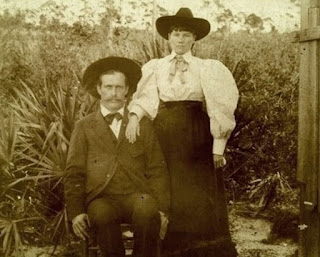 |
| The Florida guide was part of the Federal Writers' Project. |
I was casting about for a topic this month, and couldn't settle on anything. I kept being drawn back to an anecdote in the 1939 WPA guide to Florida featured in November's post.
The episode details an incident from the Reconstruction Era of the late 1860s to 1870s. I wondered if the authors included it to illustrate how much more civilized everyone had become by the 1930s. The problem is, the anecdote caught my attention because it reminded me of where we are today, in 2017-almost-2018. And that's a sad fact.
Within the WPA guide are road-trip itineraries identified as numbered tours. Tour 7 is 20 pages of tidbits about the area that parallels Florida's northern boundary. The episode that stayed with me is one paragraph on page 443 of Tour 7.
Readers learn that violence flared during Reconstruction in the city of Marianna and the surrounding areas of the county. Several killings took place. I assume the authors mean lynchings but that isn't specified. Only the fact that killings occurred. Opinions varied as to why they occurred, and the polarization is what struck me as so contemporary:
- Some laid the blame on "the activities of unscrupulous Bureau officials and politicians."
- A bishop from Massachusetts, "who had first-hand knowledge of the situation, placed the guilt on the shoulders of the planters of Jackson County."
- A judge, "an aristocrat of Marianna, claimed that 'ruffians' from the border States were responsible."
- A certain preacher and legislator believed "disputes over farm land caused much of the disorder, as poor whites objected to Negro ownership of choice farms."
- Another man, "a wealthy Bostonian living in Jacksonville, declared the lawlessness was caused by carpetbaggers."
Each person was in his own camp. Just like today. The Northerners and Southerners were at odds, similar to how Blue and Red adherents are today. I wouldn't be surprised to learn fake news was thrown about back then, too.
The WPA authors are silent about resolutions. The very next paragraph is about an abandoned inn standing in overgrown grounds.
We don't yet have any resolutions to the polarization and incivility of our times. I have to remain optimistic. In part, it's my nature. In part, it's how I stay hopeful that someday, maybe, love really will prevail.

























